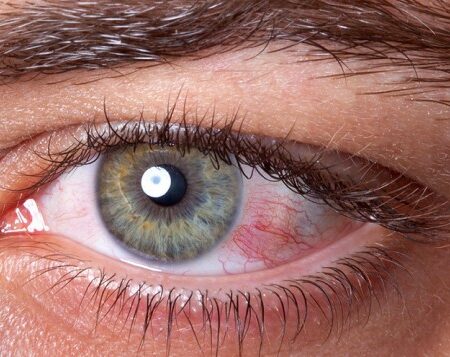Perhaps no issue is more common among those who wear contact lenses than dryness of the eyes. In most cases, contact lenses do not cause dry eyes, but can make symptoms considerably worse. This is especially true toward the end of the day, when patients most frequently experience symptoms related to dry eyes. This guide will show how to prevent dry eyes with contacts by helping you to understand what you can do to alleviate those symptoms, and continue wearing the contact lenses you’ve come to rely on for your visual needs.
What are the symptoms of dry eyes?
In most cases, our bodies are able to combat dry eye syndrome on their own. Glands located near each eye produce tears, which lubricate the eyes, preventing them from drying out. However, wearing contact lenses for long periods of time can sometimes interfere with that process, leading to common symptoms like irritation, red eyes, or an “itchy” feeling in or around the eyes, especially near the end of the day.
Of course, some patients are more susceptible to dry eyes than others, and certain conditions like Meibomian Gland Dysfunction and others can interfere with the lacrimal glands’ ability to produce tears even before contact lenses are introduced. If one of these conditions is present, your eye doctor can help you find a medical or product-related solution that will allow you to wear contact lenses comfortably.
What kind of contact lenses are best for dry eye syndrome?
As a general rule, soft contact lenses are more likely to prevent the eyes from drying out. This is because soft lenses allow for more water retention than “hard” lenses, and some soft lenses are even more effective in this regard than others. The water content of your contact lenses is something to look out for. Lenses with higher water content are generally more able to attract and retain moisture, keeping your eyes from drying. Brands like Acuvue, Air Optix, Bausch and Lomb, DAILIES, & Freshlook all utilize advanced technology that help keep give the contact lens a moist and comfortable feel.
More recently, manufacturers have come out with contact lenses made from specialized materials that are considerably more effective at combating dry eye syndrome. For example, silicone hydrogel contact lenses allow for especially high amounts of oxygen to reach the eyes, and help keep them moisturized. If you regularly experience dry eyes while wearing contacts, speak to your eye doctor about these specialized lenses.
What else can be done to prevent dry eyes while wearing contacts?
Eye drops, sometimes marketed as “artificial tears,” are always a great place to start, and in many cases these products are all a patient needs to prevent irritation and discomfort. With that said, it is extremely important to make sure that your eye drops are compatible with your contact lenses. Certain products are designed only for use with specific contact lens materials, and if you are not sure about compatibility, speak with your eye doctor to prevent any future complications. Certain types of cleaning solutions and disinfectants can also help to reduce dryness of the eyes. These products contain moisturizers, and are marketed as such. As with eye drops, always ensure that the products you use are compatible with the specific type of lenses you wear.
In the past, exceptionally dry eyes have prevented patients from experiencing the benefits of contact lenses. Today, dry eye syndrome is not the obstacle that it once was. Together with your eye doctor, a solution can almost always be worked out that will allow you to continue wearing the contact lenses you’ve come to enjoy.
Subscribe to our email newsletter to get the latest posts delivered right to your email.

